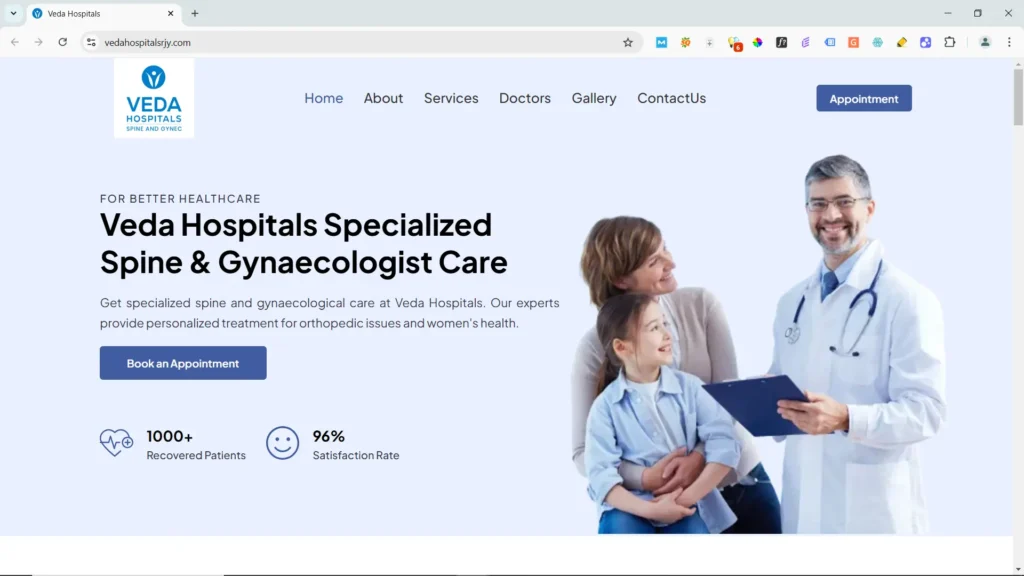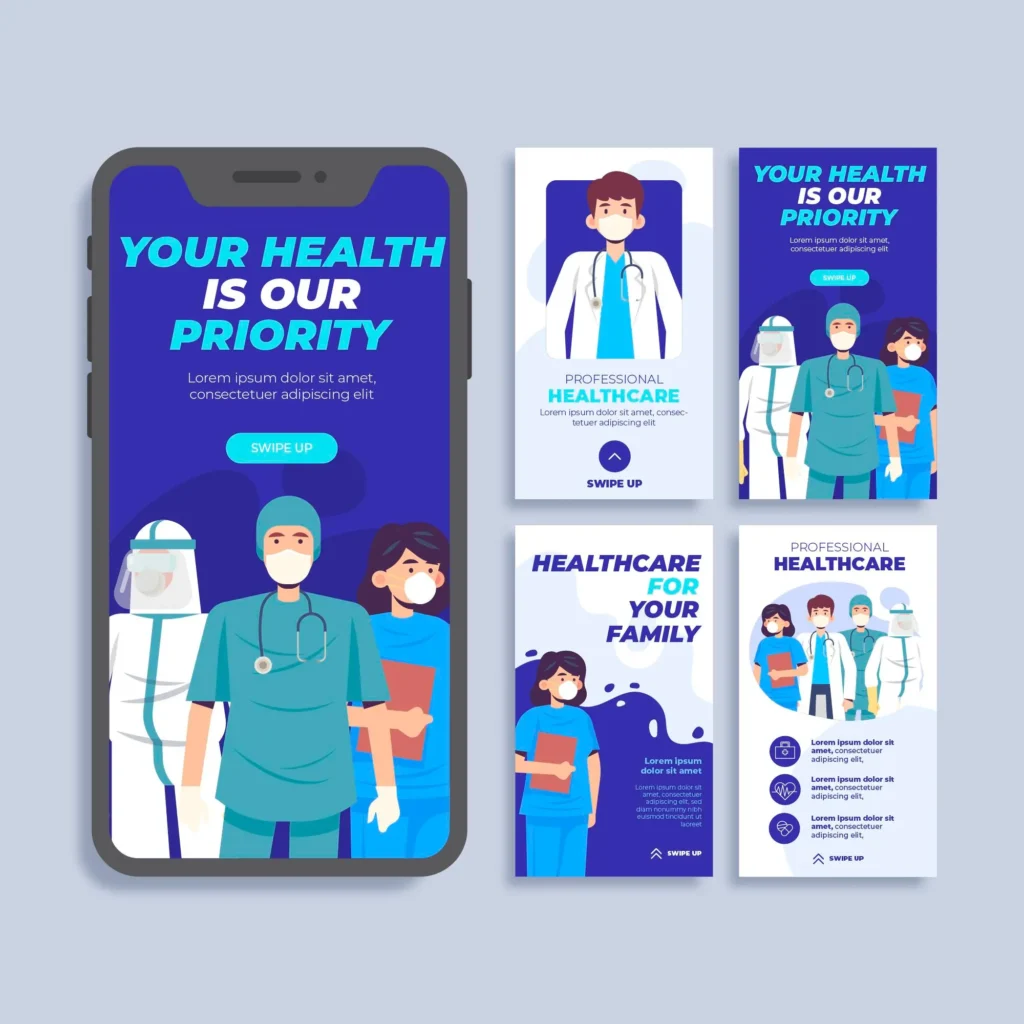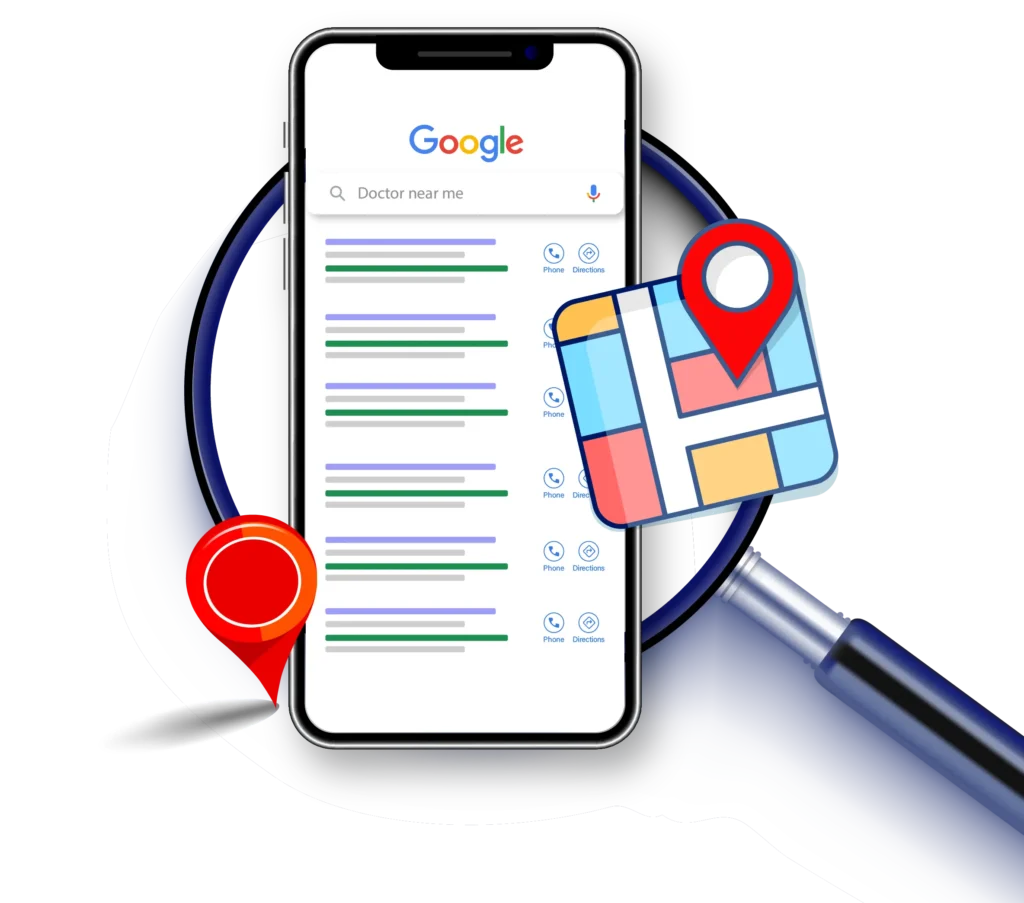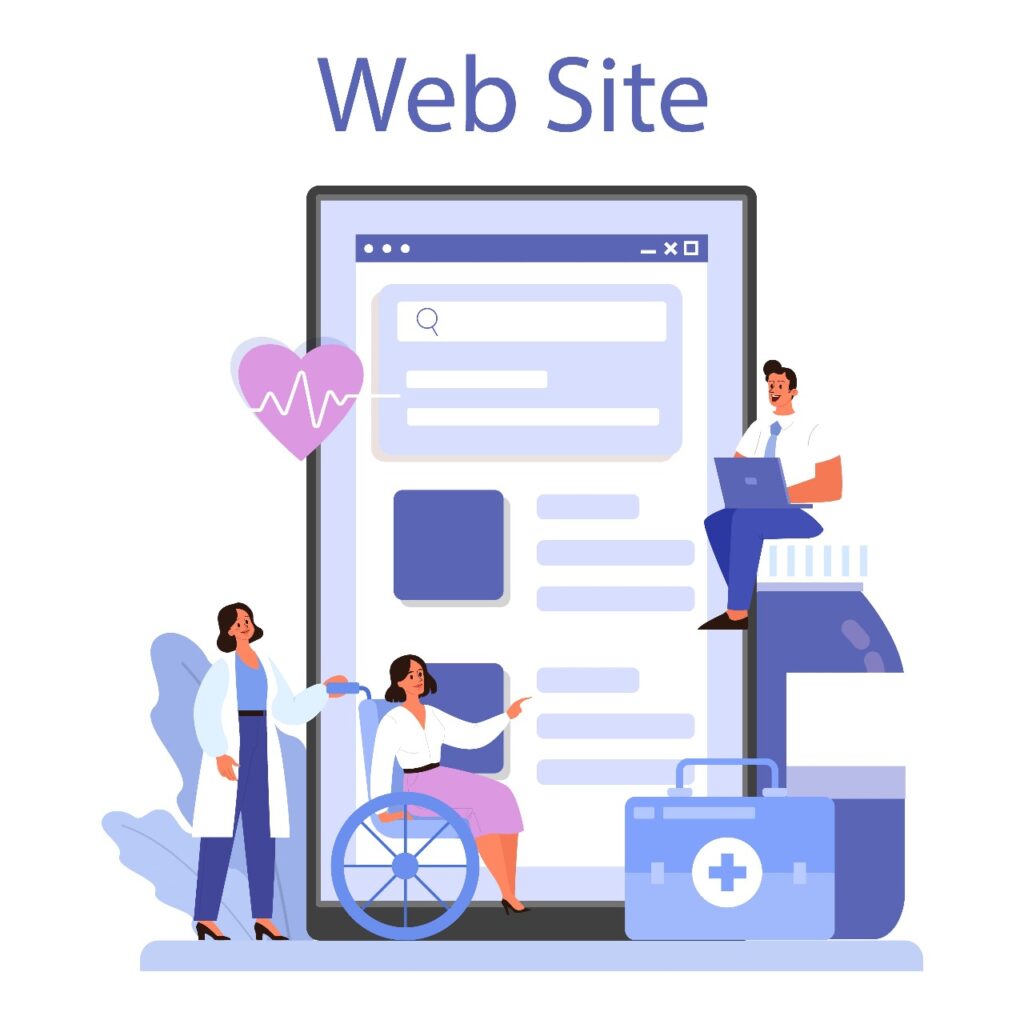Close
In today’s digital age, a strong online presence is vital for healthcare professionals to build trust, enhance visibility, connect with patients, and deliver quality care. This blog explores key aspects of developing and maintaining an online presence for healthcare professionals, offering actionable insights into leveraging digital platforms to improve patient engagement and practice growth.
Let us discuss the importance of Online Presence through the following key points.

It involves creating a digital identity that reflects professionalism, transparency, and approachability. A well-designed website showcasing qualifications, certifications, and patient testimonials demonstrates expertise and reliability. Sharing valuable content, such as blogs, videos, or FAQs, educates patients and establishes the healthcare professional as a trusted authority in their field.
Social media platforms offer opportunities to connect personally with patients by sharing success stories, behind-the-scenes glimpses, and engaging health tips. Transparent communication about services, pricing, and procedures further fosters confidence. Online reviews and ratings on platforms like Google My Business enhance credibility, while prompt responses to patient inquiries build rapport.
Additionally, maintaining a secure and user-friendly online environment assures patients that their personal information is safe. A consistent, professional online presence not only earns trust but also helps build lasting relationships with patients, improving loyalty and encouraging word-of-mouth recommendations.
Trust is a cornerstone of the patient-provider relationship. A professional and well-maintained online presence helps:

Search Engine Optimization (SEO) ensures that potential patients can find your practice online. It involves optimizing a healthcare professional’s website to improve its ranking on search engines, making it easier for patients to find the services they need. Effective SEO starts with identifying relevant keywords, such as “pediatrician near me” or “dental clinic in [city],” to target potential patients actively searching for care. These keywords should be strategically integrated into website content, meta titles, descriptions, and headers.
On-page SEO focuses on improving site performance through faster load speeds, mobile responsiveness, and user-friendly navigation, ensuring a positive user experience. Additionally, building backlinks from reputable healthcare directories or local organizations enhances site authority.
Local SEO is critical for healthcare professionals, with tools like Google My Business playing a pivotal role. Accurate listings, patient reviews, and location-based keywords drive local traffic. By combining these techniques, healthcare websites can boost visibility, attract more patients, and strengthen their online presence in a competitive market.

Social media platforms offer a powerful way to engage with patients and share valuable information. It leverages platforms like Facebook, Instagram, and Twitter to build meaningful relationships with patients. By sharing valuable health tips, educational content, and practice updates, healthcare professionals can engage with their audience and foster trust. Interactive elements like Q&A sessions, polls, and live videos encourage two-way communication, making patients feel heard and valued.
Social media also humanizes healthcare providers by showcasing behind-the-scenes moments, staff introductions, and patient success stories (with consent). Targeted advertising further helps reach specific demographics. Through consistent, engaging, and personalized content, social media marketing enhances patient connection and strengthens a practice’s online presence.

Educating patients through content marketing helps establish your practice as a trusted resource. It involves creating and sharing informative, engaging content to empower patients with knowledge about their health and wellness. By providing resources like blogs, videos, infographics, and FAQs, healthcare professionals address common questions and demystify medical topics, building trust and authority.
This approach helps patients make informed decisions about their care, enhancing their overall experience. Content tailored to patient needs—such as preventive tips, procedure guides, or condition management strategies—positions healthcare providers as reliable sources of information. Ultimately, patient education through content marketing fosters trust, strengthens relationships, and drives traffic to a practice’s website or social media channels.

The rise of telemedicine offers an excellent opportunity to reach patients who may not be able to visit physically. It allow healthcare professionals to provide care beyond traditional boundaries, offering patients convenient access to medical services from their homes. By integrating virtual consultation platforms, providers can reach rural, underserved, or mobility-limited patients, improving healthcare accessibility.
Telemedicine supports follow-ups, routine check-ups, and even specialist consultations, saving time for both patients and practitioners. It also ensures continuity of care, particularly during emergencies or pandemics. Highlighting telemedicine services on websites and social media expands a practice’s visibility, while patient-friendly interfaces and clear instructions ensure seamless adoption. This digital approach enhances patient satisfaction and broadens the provider’s reach effectively.

Google My Business (GMB) is a critical tool for healthcare professionals to enhance their local presence. These are essential tools for increasing local visibility and attracting nearby patients. A well-optimized GMB profile includes accurate practice details, such as address, phone number, operating hours, and services offered, ensuring patients can easily find and contact you.
Patient reviews on GMB build trust and improve rankings in local search results. Incorporating location-based keywords like “dentist in [city]” into website content enhances search engine visibility for local queries. By leveraging GMB and Local SEO strategies, healthcare professionals can connect with their community, drive foot traffic, and grow their practice effectively.

Maintaining a strong online reputation is essential for attracting and retaining patients.
Online advertising allows healthcare professionals to target specific patient demographics effectively. It is used to help professionals reach and engage with targeted patient demographics effectively. Platforms like Google Ads and social media enable practices to promote services such as preventive care, specialized treatments, or seasonal health check-ups.
Pay-Per-Click (PPC) campaigns ensure visibility for high-intent searches, such as “urgent care near me,” while social media ads allow precise targeting by age, location, and interests. Online advertising enhances brand awareness, drives website traffic, and generates leads. By monitoring campaign performance through analytics, healthcare providers can optimize strategies to maximize return on investment and better serve patient needs.
If you’re wondering how to position yourself better online, DigiCarotene can help with tailored digital marketing solutions for healthcare professionals.

A mobile-friendly website is non-negotiable in today’s mobile-first world. These are critical for modern healthcare practices, as most patients access information via mobile devices. A mobile-friendly website ensures seamless navigation, fast loading times, and responsive design, adapting to any screen size for optimal usability.
Features like click-to-call buttons, easy appointment booking, and location maps enhance convenience and accessibility. Clear, concise content and intuitive layouts help patients quickly find the information they need, improving satisfaction. By prioritizing mobile optimization, healthcare providers create a positive digital experience that builds trust, encourages engagement, and ensures patients can connect with their services anytime, anywhere, with ease.

Protecting patient data is critical for maintaining trust and complying with regulations. These are essential for maintaining trust and compliance in healthcare. With the rise of online consultations, electronic health records, and digital patient data, safeguarding sensitive information is paramount.
Healthcare providers must implement robust security measures, such as encryption, secure servers, and regular software updates, to protect data from breaches. Compliance with regulations like HIPAA (in the U.S.) or GDPR (in the EU) ensures legal and ethical handling of patient information. Clear privacy policies and patient communication about data protection reassure users. Prioritizing security fosters trust and ensures the confidentiality of patient information in a connected world.
For healthcare professionals, a strong online presence is no longer optional—it’s essential for building trust, enhancing visibility, and delivering exceptional patient care. From optimizing your website for search engines to engaging with patients on social media, every digital touchpoint contributes to your practice’s growth and success. By focusing on education, convenience, and security, healthcare professionals can establish a trusted and effective digital footprint that benefits both their practice and their patients.
Digi Carotene: Growth For a business with ideal customers through data, creativity & technology. Hyderabad’s Top Digital Marketing Partner.
3. Social Media Marketing: Connecting with Patients